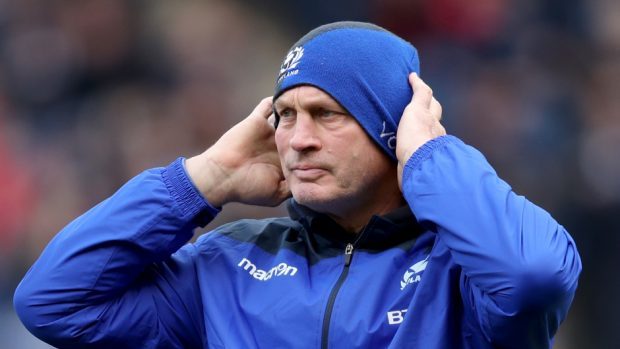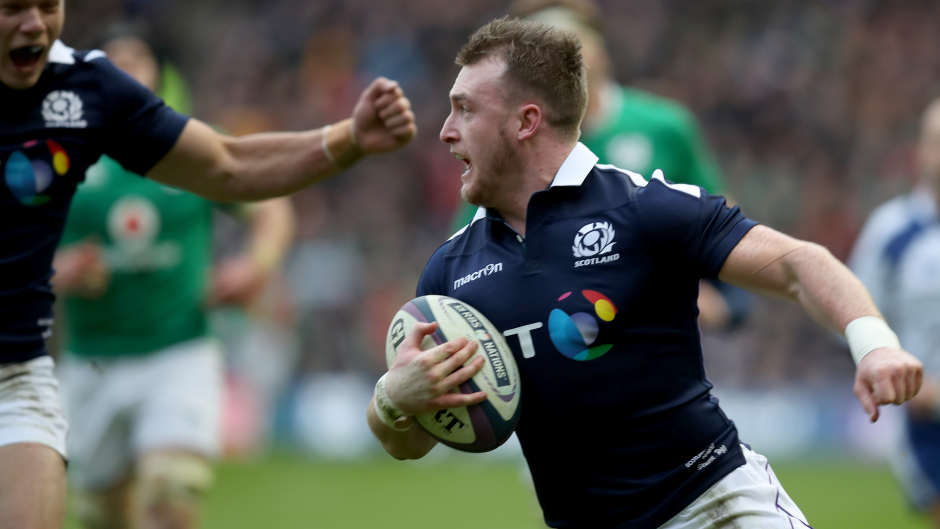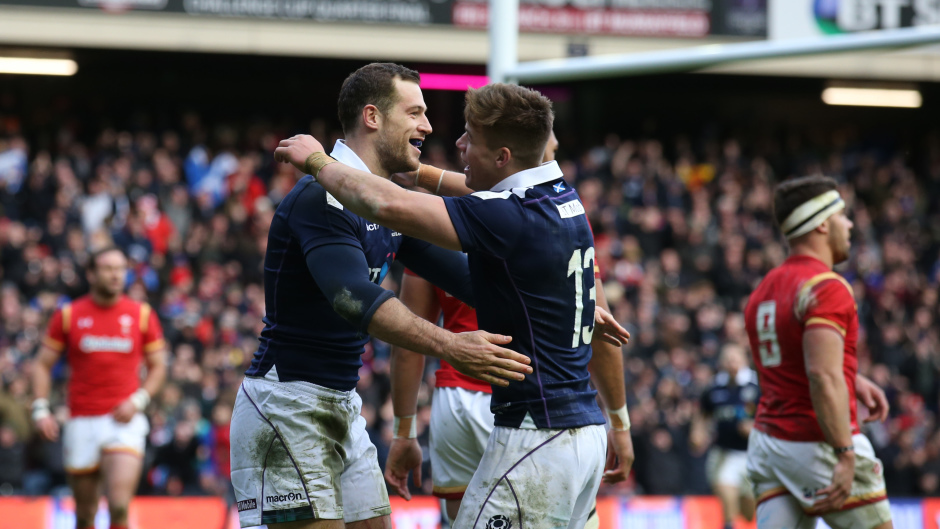Whisper it softly, but many Scottish rugby fans are travelling to London this week with something unusual in their hearts.
Something called hope.
Because the nature of the performances from Vern Cotter’s side in the Six Nations Championship have truly offered plenty to stir the blood. Victories over Ireland and Wales were not just deserved, but marked by thrilling rugby.
And yet now, the hard work really begins, as the Scots seek their first Triple Crown since 1990 at a stadium where they haven’t won since before all their squad members were born.
That statistic tells its own story. I first went to the ground the RFU calls “HQ” in 1987 and it was a dispiriting experience. Two years later, my compatriots managed a draw and were promptly accused of being “scavengers” by their rivals.
It’s that kind of environment: a venue which the great John Rutherford once described as a “frightening” place to play. And the Borderer wasn’t easily intimidated.
But the fact is that Twickenham has always been an inauspicious setting for Scots intent on seizing the Calcutta Cup from their English rivals.
Indeed, ever since the sweet charioteers moved into their intimidating arena, assorted tribes of Saltire-wielding fans have flocked down to Richmond and seen their hopes dashed.
The SRU’s finest have only tasted victory on four occasions – in 1926, 1938, 1971 and 1983 – and nobody is still with us who witnessed the first of these triumphs. But it was an occasion certainly worth celebrating.
Looking back now, there was no sense of foreboding as that contest approached 91 years ago.
On the contrary, having secured their first Grand Slam the previous season, redoubtable customers in the mould of Ian Smith, Dan Drysdale, Jimmy Ireland, John Bannerman and Herbert Waddell embraced the challenge with the enthusiasm which was typical of the period.
There was none of the endless hype which surrounds modern-day sporting tournaments.
Instead, the team left Glasgow’s Central Station on the Friday night, after finishing work, and tactics were confined to a brief pre-match discussion, prior to the main event.
If it sounds basic, that’s because it was, and the effervescent Bannerman once asked a colleague on the train through to Murrayfield: “Who is it we are playing today, Ireland or Wales?”
Yet, once they marched on to the pitch, these fellows were giants of the game and while Bannerman may not have been a stickler for punctuality, he participated in 37 consecutive matches, all but one of them in the Five Nations Championships, between 1921 and 1929.
More remarkably, still, he celebrated no less than four victories over the English, the last of them as captain.
From this distance, such riches seem implausible, but the afternoon of that maiden triumph was typical of the domination which a terrific group of backs and a coruscating pack enjoyed over their traditional foes.
Straight from the outset, they grabbed the initiative, with tries from Smith and Waddell and a drop goal (then worth four points) from Jimmy Dykes. The Scots led 14-3 at the interval, with The Times marvelling at the “quicksilver pace” of the visitors.
Obviously, they were amateurs and had to fit in rugby around their day jobs, but they used to train at lunch-times, which was unheard of in the 1920s, and they had a marvellous pace and fitness.
Although England rallied upon the resumption, another Smith try sealed a 17-9 success and nobody could argue that they didn’t merit their win. At the denouement, the legendary hooker, Jimmy Ireland, exchanged jerseys with his opposite number, Sam Tucker, and was promptly billed for 12/6 by the SRU!
None the less, these fellows headed home as heroes and Bannerman regaled his confreres with a selection of Gaelic songs, which intimated there was no better feeling than beating the English.
Glancing down the teamsheet, one of the most obvious features is the significance of Glasgow’s impact on the national side with seven representatives in the XV. (In these days, there were no replacements and if somebody picked up an injury, they had to continue or leave their ranks reduced to 14 men).
Dykes, Waddell, Jimmy Nelson and Max Simmers were all Accies stalwarts, while Ireland, Bannerman and Gordon Boyd turned out for the Glasgow HSFP club, and as Brian Simmers, Max’s son, recalls, this was a halcyon period for the second city of Empire.
“Obviously, they were amateurs and had to fit in rugby around their day jobs, but they used to train at lunch-times, which was unheard of in the 1920s, and they had a marvellous pace and fitness,” says the Glasgow Hawks stalwart, who himself gained seven Scotland caps in the 1960s.
“Max was a chartered accountant and 1926 was the first season he played for Scotland in the centre, but he went on to amass 28 caps, which was a sizeable number in the time before you had autumn internationals and summer tours.
“This was an era when Glasgow Accies used to regularly attract 10,000-strong crowds for club games and rugby was so popular that the keynote fixture against Heriot’s once had to be moved to Inverleith to accommodate the 15,000 spectators. Extraordinary, when you think what the audiences are today.
“But you have to understand that Twickenham didn’t at that stage have the reputation it has subsequently built up as a graveyard of Scottish hopes, and there was no fear, no trepidation about going down there and tackling England.
“Now, you have an ‘Us and Them’ situation, and a sense of animosity has reared its head, but in the ’20s, a lot of our boys played for the Barbarians or the university sides with the RFU lads, and they just wanted to do their best for their country.
“John Bannerman, for instance, was this big Highlander, and he was remarkably resilient and tenacious and wouldn’t lie down to anybody and his record speaks for itself.
“But, naturally, it was a completely different age: the two big Glasgow clubs were very powerful and even the London press used to highlight the Accies backline which, with hindsight, was incredibly talented.”
For his part, Bannerman was imperious in leading the rout at Twickenham, and as his grandson, Shade Munro, another ex-internationalist and current Scotland mentor recollects, the lock was fired up on these occasions as for no other.
“I have a picture of him skippering the Scots to victory at Murrayfield and the pride in his eyes is absolutely immense,” says Munro.
“In these days, the Five Nations journeys down to England were grand occasions, and although my grandad always offered 100% in his nation’s cause, he would prepare even harder for the Calcutta Cup. There were quite a few Gaelic speakers in the side and they didn’t half work themselves up. It paid dividends, didn’t it!”
Max Simmers died in 1972 and Bannerman succumbed to lung cancer in 1969 – “They all used to smoke like chimneys,” says Munro – but not before the latter had become a life peer in the House of Lords.
And what wouldn’t Scots give for a similar lording of the occasion from Stuart Hogg, Finn Russell, and their colleagues this weekend!
Scotland’s 1926 team – JC Dykes, JB Nelson, DJ MacMyn, JW Scott, JCH Ireland, R Howie, Ian S Smith, GG Aitken, AC Wallace, JM Bannerman, D Drysdale (captain), JCR Buchanan, DS Davies, H Waddell, JR Paterson


